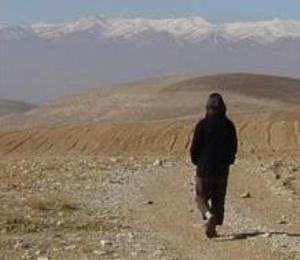|
|
The Abraham Path
un article par George S. Rishmawi
Siraj, Center For Holy Land Studies
"Tourism can foster spiritual and cultural respect among and between peoples, while creating economic opportunities to benefit disadvantaged populations." - Ban Ki-moon, UN Secretary-General
The Abraham Path is a route of cultural tourism that retraces the journey made by Abraham (Ibrahim) through the heart of the Middle East some four thousand years ago. Three and a half billion people — over half the human family — trace their history or faith back to Abraham, considered the father of monotheism. The Abraham Path honors this shared cultural heritage by linking together into a single itinerary of outstanding interest and beauty the ancient sites associated with Abraham and his family. For more information: http://www.abrahampath.org.

In Palestine, the Palestinian partners have recently completed a first round of field research and oral histories in the West Bank. A 60 km pilot walking segment has been planned, beginning in the city of Nablus - a core Abrahamic site, then going South through Duma, Taybeh, and on to Beitin (Bethel). A youth walk on the pilot segment have hosted this summer.
About 28 participants have walked and hiked from Nablus to Beitin. Passing through the villages of Awarta, Aqraba, Majdal Bani Fadil, Duma, Maghayar, Ain Samia area, Kufur Malik, Taybeh, and Beitin.
Participants were accommodated with local families in all the villages, discovered the flora and fauna in Palestine, enjoyed the beautiful Palestinian landscape. Participants enjoyed the Palestinian cuisine in various villages.
The Path in Palestine is now opened for people from all over the world to come and walk in Palestine Ahalan wa sahlan you are most welcome and for more information: George@sirajcenter.org.
|








|
DISCUSSION
Question(s) liée(s) à cet article:
How can tourism promote a culture of peace?,
* * * * *
Commentaire le plus récent:
Why tourism?
Can tourism be seen as an instrument to achieve complicity between people’s minds?
“There is nothing better that connects two people’s mind than a good conversation” The above quote could be used to describe the effect which tourism has on people. Like a great conversation, tourism could be said to play a vital role amongst people all over the world. It fosters communication in all its senses, intercultural dialogue and mutual understanding.
In today’s world it is evident that there is a shortage of moral or ethical values amongst people across the different nations in this world, resulting in a globalised world lacking these morals and ethical values. Ignorance, the failure to consider the needs of others, and selfishness are a few of the ways which hinder us from embracing diversity and a common human perspective, which would result informal empathy, internal moral compassion, tolerance of differences, historical consciousness and interpretation. The above mentioned features are intrinsic, inherent and can be found in the practice of tourism.
Tourism has been emphasized as one of the most effective instruments which continue to tackle to tackle social and economical poverty, as well as encourage the culture of peace practice amongst people. In looking at the UN architecture, one is able to see the growing implications which the tourism sector has on the world and world policies. . ... continuation.

|
|









